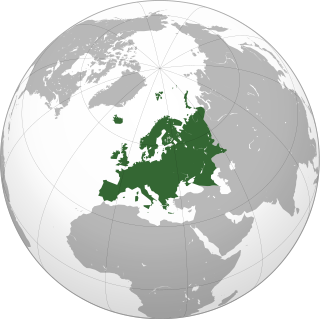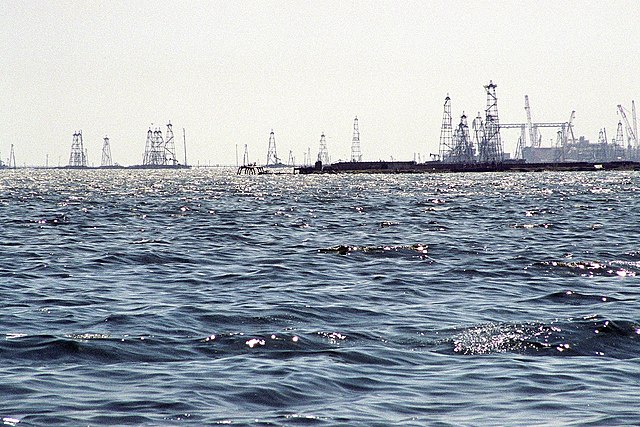Top Qs
Timeline
Chat
Perspective
Financial and social rankings of sovereign states in Europe
Overview of financial and social rankings of the sovereign states in Europe From Wikipedia, the free encyclopedia
Remove ads
This page compares the sovereign states of Europe on economic, financial and social indicators.

This article has multiple issues. Please help improve it or discuss these issues on the talk page. (Learn how and when to remove these messages)
|
Remove ads
Definition of Europe
For the purposes of comparison the broader definition of Europe will be used. A sovereign state must meet at least one of the following criteria to be included:
- Be a recognised European state by the United Nations geoscheme for Europe
- Be a member state of the European Union
- Be a member state of the Eurozone
- Be a member state of the Council of Europe
Economic
Summarize
Perspective
Countries by GDP (nominal)



Data provided is by the International Monetary Fund (2021)[1]
GDP growth rate


The real GDP growth rates provided are the 2015 estimates (unless otherwise indicated) as recorded in the CIA World Factbook.[2]
GDP (nominal) per capita of sovereign states in Europe
Data provided is by the World Bank (2021). Data for Monaco and Liechtenstein is from 2020 and 2019 respectively.[3]




GDP purchasing power parity (PPP)

Data provided is by the International Monetary Fund (2018)[4]
Net national wealth
Remove ads
European countries by total wealth
Financial
Summarize
Perspective
Current account balance
The current account balance values provided are the 2013 figures (unless otherwise indicated) as recorded in the CIA World Factbook.[6] Figures for Andorra, Liechtenstein, Monaco and San Marino are unavailable.
Public debt
The public debt values provided are the 2013 figures (unless otherwise indicated) as recorded in the CIA World Factbook.[7] Figures for Liechtenstein and Monaco are unavailable.
Unemployment rate
The unemployment rate values provided are the most recent figures provided by varying sources, namely data released by governments.
This article needs to be updated. (September 2018) |
Average wage
The average wage values provided are 2018 figures (unless otherwise stated) as recorded by varying sources, namely releases by respective Governments. The values are for monthly average wage (annual wage divided by 12 months) for net income (after taxes) in Euro currency.
Minimum wage
The minimum wage figures provided are the 2018 figures by The Federation of International Employers. Currency conversions from non-Euro currencies being based on the exchange rates of 2018.[8]
Remove ads
Social
Summarize
Perspective
Human Development Index
The Human Development Index values provided are the 2018 estimates for 2017, as included in the United Nations Development Programme's Human Development Report.[9]
Percentage living below poverty line
The percentage figures for citizens living below the poverty line are provided by either the CIA World Factbook (2007) or the World Bank (2012) [10][11][12] There is no data available for eleven European states.
Social Progress Index
The Social Progress Index figures are provided by the nonprofit Social Progress Imperative and represent 2014. Eight European states are not represented as data is not available.[13]
Opportunity
The Opportunity figures are included in the 2014 Social Progress Index by the nonprofit Social Progress Imperative. Eight European states are not represented as data is not available.[13]
World Happiness Report
The World Happiness Report is a measure of happiness published by the United Nations Sustainable Development Solutions Network, with the figures provided being the 2013 edition for the 2010 to 2012 period.[14]
Remove ads
Summary
Economic
 Azerbaijan is the second fastest growing economy in Europe, and the fastest growing transcontinental economy.
Azerbaijan is the second fastest growing economy in Europe, and the fastest growing transcontinental economy. France has the highest Net National Wealth of any European state.
France has the highest Net National Wealth of any European state. Germany is the current largest economy in Europe, the European Union and the Eurozone, with Germany remaining the eurozone's largest economy.
Germany is the current largest economy in Europe, the European Union and the Eurozone, with Germany remaining the eurozone's largest economy. Latvia is the fastest growing economy in both the eurozone and the European Union.
Latvia is the fastest growing economy in both the eurozone and the European Union. Luxembourg is home to the highest GDP (nominal) per capita in both the European Union and eurozone.
Luxembourg is home to the highest GDP (nominal) per capita in both the European Union and eurozone. Malta is the smallest economy in the eurozone as well as the European Union, and is the fastest growing European economy in the Commonwealth of Nations.
Malta is the smallest economy in the eurozone as well as the European Union, and is the fastest growing European economy in the Commonwealth of Nations. Moldova is the fastest growing economy in Europe, but is also one of Europe's poorest countries, with the lowest GDP (nominal) per capita of any European state.
Moldova is the fastest growing economy in Europe, but is also one of Europe's poorest countries, with the lowest GDP (nominal) per capita of any European state. Monaco has the highest GDP (nominal) per capita of any European state.
Monaco has the highest GDP (nominal) per capita of any European state. Russia is the largest transcontinental European economy and will remain so until at least 2030.
Russia is the largest transcontinental European economy and will remain so until at least 2030. San Marino is Europe's smallest economy, and is also the third weakest growing economy in Europe.
San Marino is Europe's smallest economy, and is also the third weakest growing economy in Europe. United Kingdom is the largest non-eurozone economy in Europe.
United Kingdom is the largest non-eurozone economy in Europe.
Financial
 Austria has the lowest unemployment rate in the European Union and the eurozone.
Austria has the lowest unemployment rate in the European Union and the eurozone. Belarus has the lowest unemployment rate in Europe, although this figure includes underemployment.
Belarus has the lowest unemployment rate in Europe, although this figure includes underemployment. Bulgaria has the smallest average wage and monthly minimum wage in the European Union.
Bulgaria has the smallest average wage and monthly minimum wage in the European Union. Estonia has the smallest public debt (as a percentage of GDP) of any state in Europe, as well as in the European Union and eurozone.
Estonia has the smallest public debt (as a percentage of GDP) of any state in Europe, as well as in the European Union and eurozone. France has the largest financial deficit of any state in the eurozone.
France has the largest financial deficit of any state in the eurozone. Georgia has the lowest monthly minimum wage in Europe.
Georgia has the lowest monthly minimum wage in Europe. Germany has the largest financial surplus of any country in Europe as well as the remainder of the world.
Germany has the largest financial surplus of any country in Europe as well as the remainder of the world. Greece has the highest public debt (as a percentage of GDP) of any European state.
Greece has the highest public debt (as a percentage of GDP) of any European state. North Macedonia has the highest unemployment rate of any European state.
North Macedonia has the highest unemployment rate of any European state. Liechtenstein has the highest average wage of any state in Europe.
Liechtenstein has the highest average wage of any state in Europe. Lithuania has the smallest average wage and monthly minimum wage in the eurozone.
Lithuania has the smallest average wage and monthly minimum wage in the eurozone. Luxembourg has the highest average wage in the European Union and eurozone as well as the highest monthly minimum wage in the entirety of Europe.
Luxembourg has the highest average wage in the European Union and eurozone as well as the highest monthly minimum wage in the entirety of Europe. Russia has the largest surplus of those European countries not a member of either (or both) the EU or eurozone.
Russia has the largest surplus of those European countries not a member of either (or both) the EU or eurozone. Ukraine has the smallest average wage in Europe, mostly as a result of the ongoing war.
Ukraine has the smallest average wage in Europe, mostly as a result of the ongoing war. United Kingdom has the largest deficit of any country in Europe and the European Union.
United Kingdom has the largest deficit of any country in Europe and the European Union.
Social
 Albania has the largest percentage living under the poverty line of any state in Europe.
Albania has the largest percentage living under the poverty line of any state in Europe.
 Armenia has the highest Change in Happiness of any state in Europe.
Armenia has the highest Change in Happiness of any state in Europe. Azerbaijan has the smallest rating for Opportunity in Europe.
Azerbaijan has the smallest rating for Opportunity in Europe. Croatia has the smallest rating for Opportunity in the European Union.
Croatia has the smallest rating for Opportunity in the European Union. Denmark ranks highest on the World Happiness Report in Europe and the European Union.
Denmark ranks highest on the World Happiness Report in Europe and the European Union. Ireland has the highest rating for Opportunity in Europe, the European Union and the eurozone.
Ireland has the highest rating for Opportunity in Europe, the European Union and the eurozone. Latvia has the weakest Human Development Index and World Happiness Index figures in the eurozone.
Latvia has the weakest Human Development Index and World Happiness Index figures in the eurozone. Lithuania has the smallest percentage living below the poverty line in Europe.
Lithuania has the smallest percentage living below the poverty line in Europe. Moldova ranks lowest on the Human Development Index and Social Progress Index in Europe.
Moldova ranks lowest on the Human Development Index and Social Progress Index in Europe. Netherlands has highest Human Development Index figure in the European Union and the eurozone, and also ranks first in the EU and eurozone on the Social Progress Index, as well as being the highest ranked country in the eurozone on the World Happiness Index.
Netherlands has highest Human Development Index figure in the European Union and the eurozone, and also ranks first in the EU and eurozone on the Social Progress Index, as well as being the highest ranked country in the eurozone on the World Happiness Index. San Marino has the highest Human Development Index figure in Europe.
San Marino has the highest Human Development Index figure in Europe. Switzerland ranks highest in Europe on the Social Progress Index.
Switzerland ranks highest in Europe on the Social Progress Index.
Remove ads
Notes
References
Wikiwand - on
Seamless Wikipedia browsing. On steroids.
Remove ads
